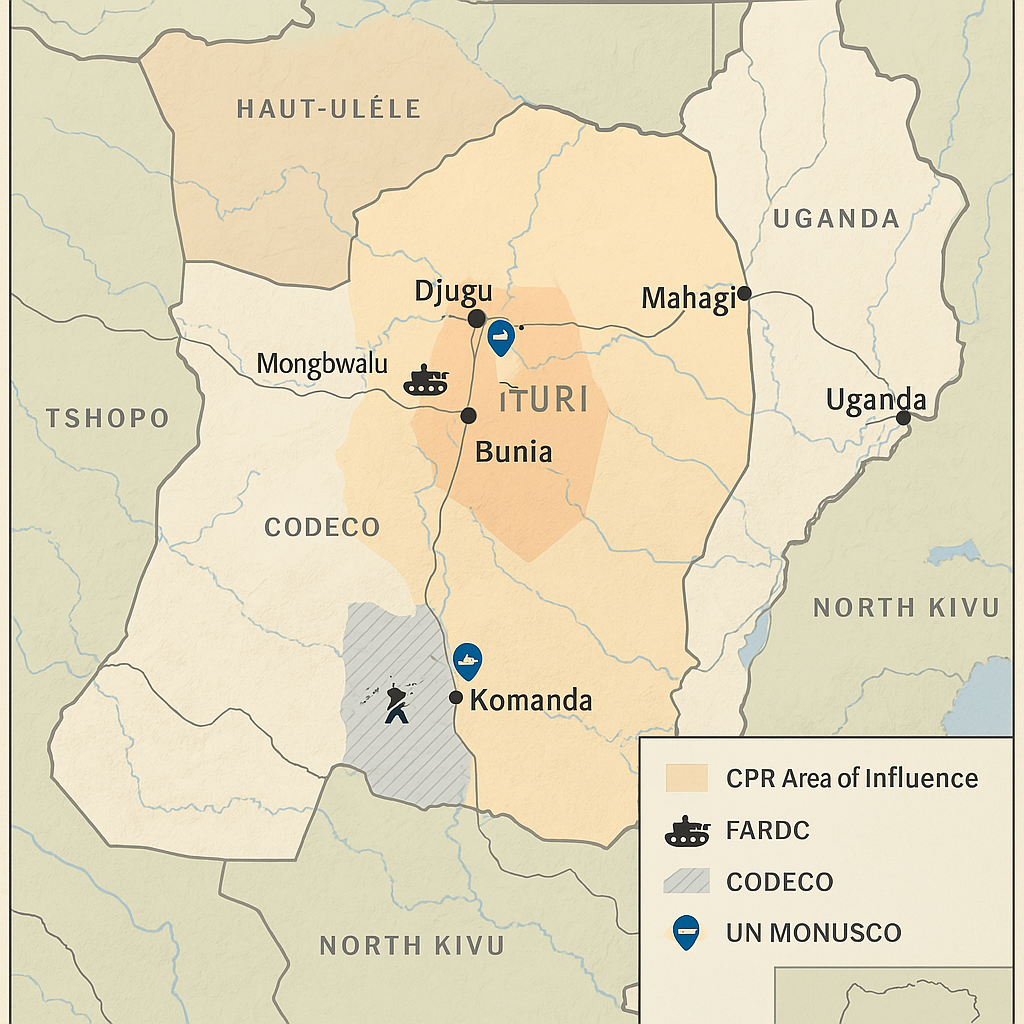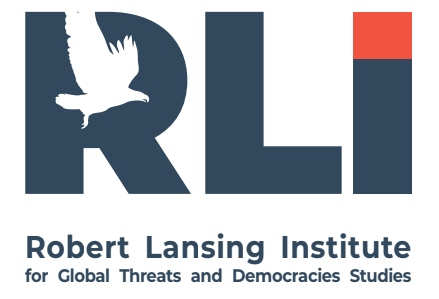The recent war between India and Pakistan—though short in duration—has left behind a complex legacy. While active hostilities have ceased under international pressure, particularly from the United States and China, the conflict has reshaped strategic calculations in South Asia. The war neither resolved the Kashmir dispute nor delivered a decisive military victory. Instead, it intensified regional militarization, deepened external dependencies, and revealed the growing role of emerging technologies in high-stakes conventional conflict.
I. The Conflict: Context and Termination
The conflict was triggered by a high-casualty terrorist attack in Indian-administered Kashmir, attributed by New Delhi to Pakistan-based militants. India’s response was swift and multi-domain: air and missile strikes, cross-border raids, and cyber operations. Pakistan retaliated with limited conventional force and asymmetric attacks. The war was characterized by rapid escalation, real-time media warfare, and near-nuclear brinkmanship.
Combat operations ceased following a U.S.-China mediated ceasefire, with Gulf actors offering backchannel support. No formal peace framework has emerged. Tensions remain high, and forces on both sides are still deployed in elevated readiness.
II. Strategic Outcomes: A War Without Victory
India: Tactical Success, Strategic Ambiguity
- Demonstrated capacity for rapid, multi-theater response.
- Successfully targeted militant infrastructure and imposed costs on Pakistan.
- Suffered international criticism over proportionality and civilian casualties.
- Domestic political gains were achieved at the cost of regional stability and international image.
Pakistan: Strategic Denial, Economic Setback
- Prevented territorial loss and rallied international sympathy.
- Revealed vulnerabilities in India’s border defenses and airspace management.
- However, its economic crisis deepened, and its strategic autonomy narrowed, particularly in relation to China.
- Neither side achieved strategic victory. Instead, the war reinforced the dangers of instability in a nuclearized region where political goals often exceed military capability.
III. Regional Implications
Kashmir and Internal Security
- Intensified militarization of the Line of Control (LoC).
- Civilian displacement, human rights concerns, and renewed insurgency risk.
- Politicization of conflict in both capitals has hardened positions.
Afghanistan and Central Asia
- The conflict reduced both states’ focus on regional counterterrorism and post-Taliban diplomacy.
- Opened space for extremist groups to exploit distracted security environments.
Gulf and Middle East Actors
- UAE and Saudi Arabia emerged as effective mediators, increasing their geopolitical credibility.
- Gulf energy markets experienced temporary shocks, pushing these states to further diversify diplomatic ties with China and the West.
IV. China’s Strategic Gains
Despite initial discomfort with conflict near its borders, China emerged as a key post-war player:
- Used the crisis to expand military-intelligence cooperation with Pakistan, particularly along the China–Pakistan Economic Corridor (CPEC).
- Played a calculated diplomatic role, positioning itself as a responsible power while reaping benefits from India’s overstretched military focus.
- Gained influence in Nepal, Bangladesh, and Sri Lanka by offering economic and security support amid India’s distraction.
Implication: China now plays a de facto balancing role in South Asia, leveraging crisis diplomacy to deepen client-state dynamics.
V. Military and Technological Lessons
Emerging Technologies
- Extensive use of unmanned aerial systems (UAS), cyberattacks, and AI-enabled surveillance.
- First significant South Asian conflict where autonomous strike capabilities and cyber denial-of-service attacks shaped the battlespace.
Nuclear Ambiguity
- Both sides engaged in nuclear signaling, yet neither clearly communicated red lines.
- Risk of miscalculation was dangerously high, especially under domestic political pressure and media sensationalism.
Force Integration
- India faced logistical coordination challenges across its tri-services.
- Pakistan demonstrated tighter command and control but remained conventionally outmatched.
VI. Policy Recommendations
For India and Pakistan:
- Establish direct conflict de-escalation channels, separate from diplomatic ties.
- Commit to transparency in military exercises and force movements near contested zones.
- Begin talks—possibly via third-party backchannels—on mutual force reductions and LoC stabilization.
For the United States and EU:
- Press for a structured crisis management mechanism between New Delhi and Islamabad.
- Incentivize economic stabilization in Pakistan to reduce its dependence on asymmetric tools.
- Support independent investigative mechanisms for conflict-related violations to reduce future impunity.
For China:
- If Beijing wishes to be seen as a stabilizing actor, it must avoid opportunistic alignment and support regional arms control talks.
- Use its leverage to prevent further militant proxy use by Pakistan-based groups.
The India–Pakistan war of 2025 has not settled old disputes but rather exposed the fragility of deterrence in the nuclear age. It illustrated the increasing salience of non-traditional warfare—cyber, drones, propaganda—while reaffirming that conventional militaries and regional diplomacy remain deeply intertwined. The international community must act now to prevent another round of escalation—one that may not be containable.
Forecast: India–Pakistan Security Outlook (2025–2030)
🔹 Short-Term (6–12 months): Fragile De-escalation, High Risk of Incidents
- Conflict pause, not resolution: The ceasefire will likely hold formally, but expect frequent LoC violations, militant attacks, and cross-border rhetoric.
- India will remain on high alert, particularly in Kashmir, and pursue counter-insurgency and anti-infiltration operations, increasing the risk of accidental escalation.
- Pakistan will intensify diplomatic outreach to China, the OIC, and the West to pressure India over Kashmir and sanctions relief.
- Militants, potentially with Afghan or rogue Taliban links, may test the ceasefire—prompting Indian retaliation.
Risk: A major terror attack on Indian soil could rapidly spiral into a new kinetic episode.
Medium-Term (1–3 years): Strategic Recalibration, Arms Race Accelerates
- India will expand its military footprint near the LoC and along the Chinese border, investing in air defense, cyber capabilities, and special forces.
- Pakistan, under Chinese and Gulf patronage, will pursue precision strike capabilities, modernize its Air Force, and further entrench unconventional deterrence (including non-state assets).
- Expect a deterioration in nuclear stability: India may move toward greater nuclear readiness or doctrinal revision, while Pakistan keeps its posture ambiguous.
- Cross-border proxies may resurface, especially if Pakistan faces internal unrest or India increases pressure in Kashmir.
Risk: Conventional or cyber skirmish could escalate into limited war unless new crisis-management mechanisms are introduced.
Long-Term (3–5 years): Entrenched Rivalry, More External Influence
- Unless structural political change occurs, both countries will remain locked in a “managed hostility” dynamic.
- China and the Gulf states will gain leverage over Pakistan’s strategic posture; India may deepen quadilateral (QUAD+) or Western defense partnerships.
- Kashmir will remain a flashpoint. Unless backchannel talks resume, insurgency and repression could intensify.
- There is a real risk of a second conflict, especially if:
- India perceives that Pakistan is using terrorism again as a state instrument;
- Pakistan feels diplomatically isolated or faces internal collapse.
🔴 High-end risk: The next war could involve AI-enabled systems, cyber sabotage of nuclear command chains, or even tactical nuclear use if escalation is not checked early.
🔍 Key Drivers of Future Stability or Escalation
| Factor | Stabilizing Impact | Destabilizing Impact |
| U.S./China Diplomacy | Balanced external mediation | Great-power rivalry plays out in South Asia |
| Domestic Politics | Leaders show political will for talks | Populism, election cycles drive hardline postures |
| Technology | Improves ISR, verification, deterrence | Enables faster escalation, decision errors |
| Economic Pressure | Incentivizes restraint | Collapse (esp. in Pakistan) invites adventurism |
| Third-party Actors | External pressure suppresses militants | Rogue groups or Taliban-linked actors intervene |
Bottom Line Forecast (to 2030)
“Stable instability” is the most probable path forward—a fragile equilibrium punctuated by local escalations, cyber skirmishes, and political posturing. The next five years will test the ability of both nations—and the international system—to manage a rivalry that is no longer just about borders, but about ideology, influence, and emerging technologies.”
Why Nuclear Weapons Were Not Used in the 2025 India–Pakistan War
1. Strategic Deterrence Still Worked — With Limits
Despite escalatory rhetoric, both sides understood the catastrophic consequences of even limited nuclear use. The basic logic of Mutually Assured Destruction (MAD) remains intact — even in a region with tactical weapons.
- India’s doctrine emphasizes “no first use” (NFU), and its credibility held despite pressure.
- Pakistan’s doctrine is more ambiguous, allowing tactical nuclear use in case of conventional defeat — but Islamabad judged the conflict hadn’t crossed that threshold.
🔎 Conclusion: Both governments used nuclear signaling for deterrence—not for actual employment.
2. Conflict Scope Was Deliberately Managed
Both states escalated horizontally (cyber, conventional raids, limited strikes), but carefully avoided vertical escalation(deep strikes, strategic bombing, chemical/nuclear use).
- India avoided full-scale mobilization (like 2001–02 Operation Parakram).
- Pakistan did not invoke its full-spectrum deterrence posture in a way that would clearly justify battlefield nuclear use.
Military objectives were limited by design — the war was never existential in character.
3. Diplomatic Firebreaks Activated Quickly
The United States, China, and Gulf states (especially UAE and Saudi Arabia) worked intensively behind the scenes to:
- Clarify red lines
- De-escalate public rhetoric
- Facilitate secure communications between military channels
- Offer economic and diplomatic carrots to both sides to avoid further escalation
This external pressure was credible and constant — particularly important given Pakistan’s economic vulnerability and India’s global aspirations.
International diplomacy served as a critical off-ramp from the nuclear edge.
4. Domestic Political Control Was Maintained
- In both countries, civilian control over the military remained intact.
- No major political assassinations, mutinies, or state collapse occurred — which are the kinds of shocks that might drive a state to nuclear desperation.
- India’s leadership was under domestic pressure to act boldly, but still calculated the risks of nuclear retaliation as outweighing short-term political gains.
Nuclear use usually happens when political systems break down.
5. Fear of International Isolation and Economic Collapse
For both countries — especially Pakistan — nuclear use would have led to:
- Global sanctions and economic ruin
- Loss of Chinese, Gulf, and even Turkish support
- Suspension from international forums (UN, OIC, SCO, etc.)
- Permanent loss of moral high ground on the Kashmir issue
India, too, would have suffered massive diplomatic damage, threatening its aspirations for UNSC membership, trade with the West, and regional leadership.
🌍 The cost-benefit ratio of nuclear use remained deeply negative.
6. The Deterrent Itself Is Political, Not Just Military
Especially in South Asia, nuclear weapons are more useful as tools of influence and deterrence than battlefield assets. Their real power is in shaping perceptions and limiting adversary options.
Using them would mean burning the credibility of the deterrent and opening the door to unacceptable retaliation.
What Could Have Changed the Equation?
Despite the rationality seen here, several scenarios could have led to nuclear use:
- Deep Indian armor thrusts into Pakistani Punjab threatening key cities (e.g., Lahore).
- Massive Indian air superiority campaign targeting Pakistani command-and-control.
- Collapse of Pakistani state authority or decapitation of its leadership.
- Strategic misinterpretation of troop movements or decoys as nuclear strike preparations.
- Militant false-flag operations aimed at triggering overreaction.
Nuclear weapons were not used in the 2025 conflict because:
- The war remained below existential thresholds.
- Both sides viewed the cost of nuclear use as far outweighing any potential gains.
Strategic deterrence still works in South Asia, but is increasingly fragile in the face of cyber disruption, high-speed escalation, and domestic pressures.

More on this story: Evaluating the Risk of Conflict Between Pakistan and India”




